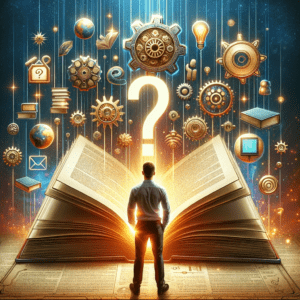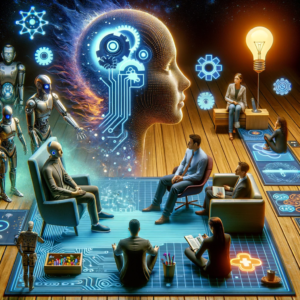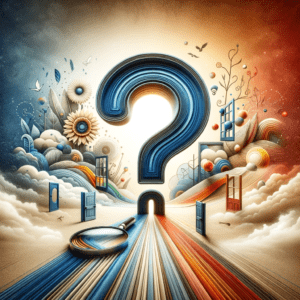Navigating the complex terrain of emotional responses and mental health, this article presents a unique perspective on emotional dysregulation and its deep-rooted connection with stress. It explores how different emotional states like grief, depression, and trauma are not just standalone experiences but are intricately linked with how we perceive and handle stress over time.
Emotional Dysregulation Over Time
“I created this image as a response to some of the text I was reading about ‘When Grief Goes Awry.’ It is meant to represent the concept of emotional dysregulation over time in relation to stress that is not being balanced. The intensity levels, on the y-axis, are meant to represent how over time, various emotional/somatic responses that are produced from stress (discomfort, grief, depression, trauma) may fluctuate and increase as time goes on, if not addressed.”
The Progression of Emotional States
“The graph isn’t meant to suggest that one must feel discomfort, then grief, then depression, then trauma, but instead, each phase can be separate on its own and fluctuate within its own timeframe, delineated by the dotted lines.”
Stress as the Root Cause
“I feel that everything we categorize into labels and negative states of being or mental disorders, all essentially stem from a sense of stress, both perceived and felt. This can even include biological stress, created from hormone imbalances/ lower neuron pathways in the brain, genetic predispositions or physical deformities etc.”
The Escalation of Unaddressed Stress
“Essentially, the longer any experienced stress goes on without balancing it out in some positive way, leading to positive experiences, the more disturbed an individual can become. Of course, a traumatic event can occur, or a major loss can occur, influencing and spiking the dysregulation intensity. However, perhaps the amount of time the dysregulation remains at higher intensity levels is dependent on how long other stresses have gone unbalanced.”
Rethinking the Relationship with Stress
“Perhaps I am suggesting that the relationship to stress is more influential in concepts like grief, depression and trauma than perhaps understood or conceptualized. I like to consider stress, grief, depression and trauma all interconnected through a stemming origin of stress, making stress the underlying and ultimate ’cause’ of any negative human experience.”
The Bigger Picture in Mental Health
“Childhood experiences, attachment, meaning assignment, assumptive reality, automatic responses- all influenced by learned patterns of experiencing and reacting to previous stress. Thinking in ‘Big Picture’ frameworks like this is what I believe lacks in education/ psychology and the mental health industry in general. Perhaps if we looked at various concepts with bigger perspectives, such as grief, we could potentially develop more effective interventions and preventative measures.”
Holistic Approaches to Mental Health
“By understanding the interconnectedness of these emotional states and their relationship to stress, we may be able to address and appropriately re-frame the root causes more effectively, rather than just treating symptoms. This broader perspective could lead to more comprehensive and holistic perceptions and approaches to mental health, focusing on not just the individual symptoms, but the underlying factors that contribute to the various intensity levels of emotional dysregulation and distress.”
AI’s Role in Mental Health
“Being mindful of the interconnectedness of human emotion and all other contexts of stress, as a default approach for any problem, may improve our ability as counselors to create more personalized and targeted interventions, ultimately improving the well-being of individuals and communities as a whole. And, with AI’s supportive technological advancements, we can harness its capabilities to analyze vast amounts of data and identify patterns that may not be immediately apparent to human counselors. This can lead to more effective and efficient interventions, ultimately benefiting the well-being of those we serve.”






